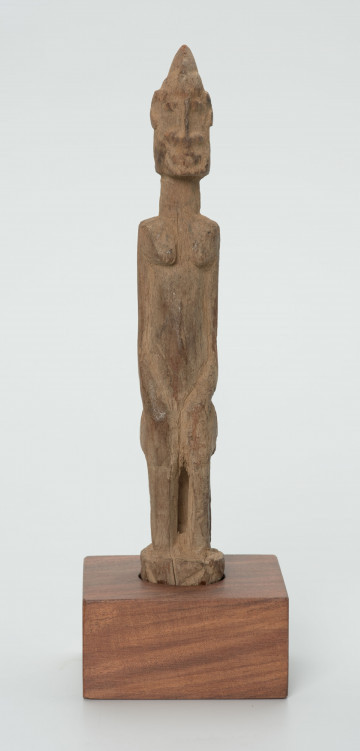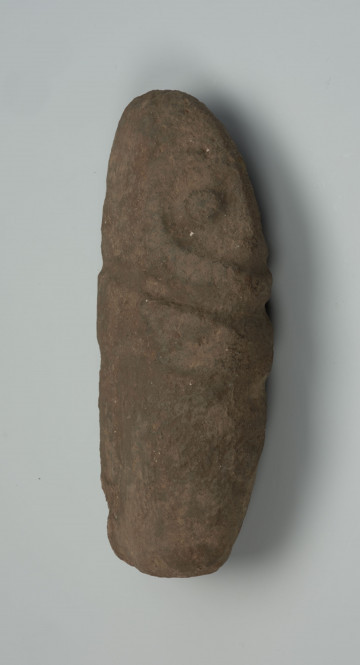
Figurine - ancestor
między 1901 — 1950
National Museum in Szczecin
Part of the collection: Collection of Dogonian art
The Dogon are people living in the Bandiagara, Douentza and Bankass regions, in the south-central part of the Republic of Mali. A small number of Dogon settlements can also be found in the northern part of Burkina Faso, on the border with Mali. The most crucial motif of their art are figural representations of ancestors, which are placed on altars dedicated to them. Images of real and mythical, male, female and androgynous ancestors appear. The Dogon usually carve human figures in a simplified manner. They are slender and have disproportionately large heads. Anatomical details are marked symbolically, but the ways of decorating the body are rendered carefully. The most important elements in the statuettes depicting women are the head and breasts, while in the images of men - the arms and genitals. Among the anthropomorphic figures we can distinguish between standing, kneeling, sitting or riding a horse, raising one or both hands in various poses and holding or carrying objects or attributes related to a certain sex, age, occupation or social status.A sculpture depicting a figure with the left hand raised is, according to Dogon tradition, an image of a left-handed person. The Dogon believe that left-handed people are unique individuals possessing, in addition to their own nyama life force, some of their father's energy. According to the inhabitants of Bandiagara Escarpment left-handed people have special powers located in their left hand. Such people are built altars called bala during their lifetime to protect them and to increase and strengthen their nyama. On these altars, figures are placed with the left hand raised, which are symbolic representations of the altar owner. The bala altars are placed in the corner of the house during the life of ginna and after death they are moved to a niche on the façade of the ginna house.
Ewa Prądzyńska
Author / creator
Dimensions
cały obiekt: height: 24 cm, width: 5,5 cm
Object type
figure
Creation time / dating
Creation / finding place
Identification number
Location / status

między 1901 — 1950
National Museum in Szczecin

między 1951 — 2000
National Museum in Szczecin

między 1951 — 2000
National Museum in Szczecin
DISCOVER this TOPIC
Museum of King Jan III's Palace at Wilanów
DISCOVER this PATH
Educational path